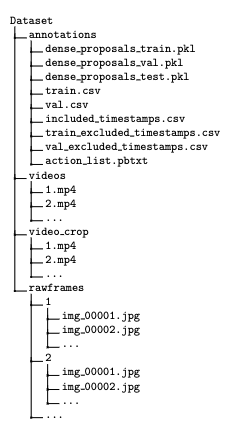我在
this answer做了一些游戏,甚至向Apple提出了RADAR问题,要求提供更好的文件记录(蟋蟀唧唧喳喳).
问题是:字符串间隔如何工作?
如果你看看我操场上的第367行,你会发现我在乱用字符串间隔.
// String Intervals
// These are odd. Looks like it is using the ASCII values. I should experiment with Unicode,and see where we go...
let aThroughFClosed:ClosedInterval<String> = "A"..."F"
let dThroughQClosed:ClosedInterval = "D"..."Q"
let mThroughSClosed:ClosedInterval = "M"..."S"
let tThroughWClosed:ClosedInterval = "T"..."W"
let whiskeyTangoFoxtrot1 = "QED"..."WTF" /* Not sure what will happen when I start working with this... */
let aThroughHHalfOpen:HalfOpenInterval<String> = "A"..<"H"
let dThroughRHalfOpen:HalfOpenInterval = "D"..<"R"
let mThroughTHalfOpen:HalfOpenInterval = "M"..<"T"
let tThroughXHalfOpen:HalfOpenInterval = "T"..<"X"
let whiskeyTangoFoxtrot2 = "QED"..<"WTF"
let clampedString1 = aThroughFClosed.clamp ( dThroughQClosed ) /* This represents "D"..."F" */
let clampedString2 = dThroughQClosed.clamp ( aThroughFClosed ) /* This represents "D"..."F" */
let clampedString3 = dThroughQClosed.clamp ( mThroughSClosed ) /* This represents "M"..."Q" */
let clampedString4 = dThroughQClosed.clamp ( tThroughWClosed ) /* This represents "Q"..."Q" */
let clampedString5 = aThroughFClosed.clamp ( tThroughWClosed ) /* This represents "F"..."F" */
let clampedString6 = aThroughHHalfOpen.clamp ( dThroughRHalfOpen ) /* This represents "D"..<"G" */
let clampedString7 = dThroughRHalfOpen.clamp ( aThroughHHalfOpen ) /* This represents "D"..<"H" */
let clampedString8 = dThroughRHalfOpen.clamp ( mThroughTHalfOpen ) /* This represents "M"..<"R" */
let clampedString9 = dThroughRHalfOpen.clamp ( tThroughXHalfOpen ) /* This represents "R"..<"R" */
let clampedString0 = aThroughHHalfOpen.clamp ( tThroughXHalfOpen ) /* This represents "H"..<"H" (Not exactly sure why) */
// 2.2.3: STRING INTERVALS
// String intervals are weird. Just sayin'...
// 2.2.3.1: STRING INTERVALS AS SWITCH TESTS
var testValue3:String = "B"
switch ( testValue3 )
{
case aThroughFClosed: /* This will catch it. */
println ( "In A...F." )
default:
println ( "In catchall." )
}
// Looks like the test is only on the first letter.
testValue3 = "Badz-Maru"
switch ( testValue3 )
{
case aThroughFClosed: /* This will catch it. */
println ( "In A...F." )
default:
println ( "In catchall." )
}
testValue3 = "\tBadz-Maru" /* If we add a tab character to the start of the string,then the first test will fail. */
switch ( testValue3 )
{
case aThroughFClosed:
println ( "In A...F." )
default: /* This will catch it. */
println ( "In catchall." )
}
// Now,we'll get really strange. Let's look at our multi-character intervals...
testValue3 = "W"
switch ( testValue3 )
{
case whiskeyTangoFoxtrot2: /* This catches it. */
println ( "WTF,dude?" )
default:
println ( "In catchall." )
}
testValue3 = "T"
switch ( testValue3 )
{
case whiskeyTangoFoxtrot2: /* This catches it. */
println ( "WTF,dude?" )
default:
println ( "In catchall." )
}
testValue3 = "F"
switch ( testValue3 )
{
case whiskeyTangoFoxtrot2:
println ( "WTF,dude?" )
default: /* However,in this case,it falls through to default. */
println ( "In catchall." )
}
testValue3 = "WT"
switch ( testValue3 )
{
case whiskeyTangoFoxtrot2: /* "WT" is caught. */
println ( "WTF,dude?" )
default:
println ( "In catchall." )
}
testValue3 = "WTF"
switch ( testValue3 )
{
case whiskeyTangoFoxtrot2:
println ( "WTF,dude?" )
default: /* "WTF" is not caught. */
println ( "In catchall." )
}
testValue3 = "QED"
switch ( testValue3 )
{
case whiskeyTangoFoxtrot2: /* "QED" is caught. */
println ( "WTF,dude?" )
default:
println ( "In catchall." )
}
testValue3 = "QTF"
switch ( testValue3 )
{
case whiskeyTangoFoxtrot2: /* "QTF" is caught. */
println ( "WTF,dude?" )
default:
println ( "In catchall." )
}
testValue3 = "QSF"
switch ( testValue3 )
{
case whiskeyTangoFoxtrot2: /* "QSF" is caught. */
println ( "WTF,dude?" )
default:
println ( "In catchall." )
}
testValue3 = "QAF"
switch ( testValue3 )
{
case whiskeyTangoFoxtrot2:
println ( "WTF,dude?" )
default: /* QAF falls through. */
println ( "In catchall." )
}
解决方法
据我了解,ClosedInterval(lo,hi)表示所有字符串
lo <= s <= hi
和HalfOpenInterval(lo,hi)表示所有字符串
lo <= s < hi
其中< =和<由字符串的字典排序决定,
即逐个比较字符,直到找到差异.
例如“QED”< “T”< “WTF”因为Q< T< W,但是“F”< “QED”因为
F<问:因此
HalfOpenInterval("QED","WTF").contains("T") == true
HalfOpenInterval("QED","WTF").contains("F") == false
并且“QED”< “QSF”,因为Q == Q和E< S,但“QAF”< “QED”因为Q == Q且A< E.因此
HalfOpenInterval("QED","WTF").contains("QSF") == true
HalfOpenInterval("QED","WTF").contains("QAF") == false
这应该解释你所有的测试结果.
最后,
let clampedString0 = aThroughHHalfOpen.clamp ( tThroughXHalfOpen )
因为“A”……<“H”和“T”......<“X”没有共同点.对于任何空间,可以用HalfOpenInterval(dummy,dummy)表示空间隔虚拟的价值.






